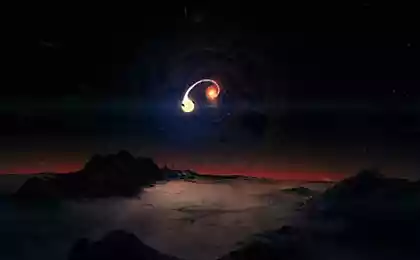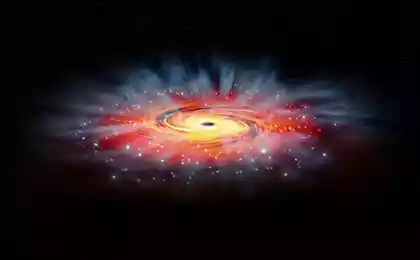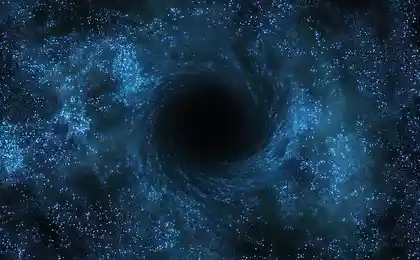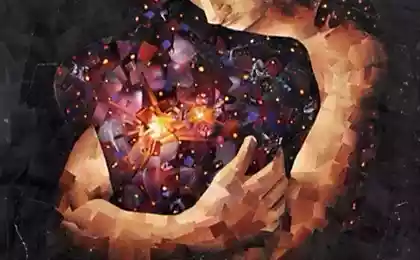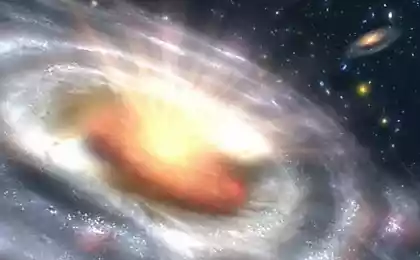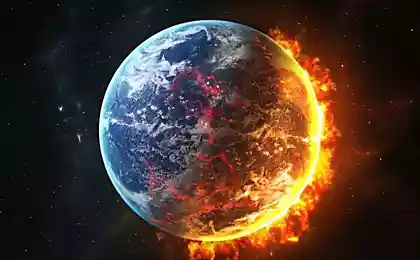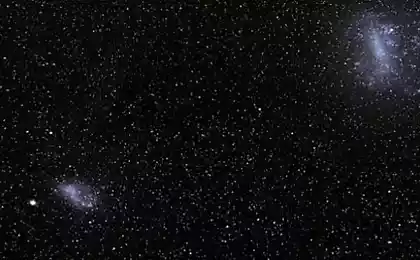594
10 interesting facts that you should know about black holes
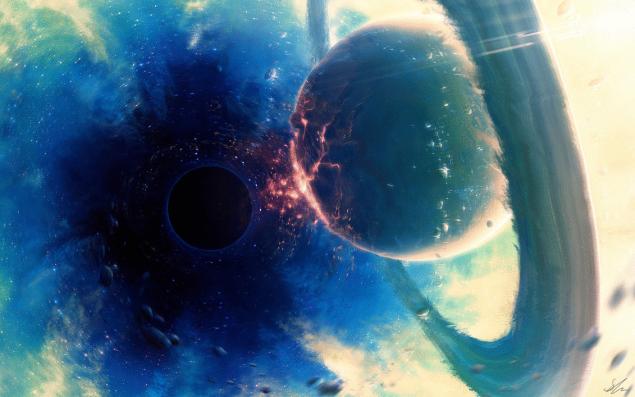
Imagine matter Packed so densely that nothing can leave its borders. Nor the moon, nor planet, nor even the light. Such black holes are the points at which the gravitational force is so great that it is a danger to everything that randomly goes fatal line near a black hole. We often talk about the origins of black holes and why they are so important. Below you will find ten facts about black holes — brush up on your knowledge of these beautiful objects.
1. You can't see a black hole directly
Since a black hole is truly a black — light can not leave its borders — it is impossible to see directly, using our tools, regardless of what type of electromagnetic radiation you can see (visible light, x-rays, whatever). But we can observe the effects that a black hole has on the immediate environment. For example, the star got too close to a black hole. A black hole naturally attracts star and tearing it apart. When matter starts to be absorbed by the black hole, it speeds up, becomes hot and glows brightly in x-ray spectrum.
2. In the milky Way, most likely, there is a black hole
Obviously, many concerned with the question of how dangerous a black hole and threatens the Land if any opportunity to be absorbed by this object? Answer: no, astronomers say, although there is a certain probability that a huge supermassive black hole hiding in the center of our galaxy. Fortunately, we are far enough away from this monster is about two-thirds of our galaxy from the centre, but we can observe its effects from afar. The European space Agency says that a black hole in the center of the milky Way is a million times more massive than our Sun and is surrounded by a surprisingly hot gas.
3. Dying stars create stellar black holes
Let's say you have a star 20 times more massive than our Sun. Our Sun slowly fade; when the nuclear fuel runs out, the Sun will slowly turn into a white dwarf. But in the case of more massive stars, this does not happen. When it runs out of fuel, gravity suppresses the natural pressure of the star and pushes her inside. When the pressure of nuclear reactions collapses, gravity cruelly squeezes the star into the core, the outer layers fly in space. This is called a supernova. The remaining core collapses into a singularity — a point with infinite density and almost zero volume. The singularity — the heart of a black hole.

Compare: a black hole in the center of the cluster of Phoenix and our Solar system
4. Black holes come in different sizes
There are at least three different types of black holes, says NASA, ranging from relatively small to those that are placed in the centers of galaxies. Primary black holes are very small, their size can vary from one atom to a mountain. Stellar black holes, the most common type up to 20 times more massive than our Sun. And there are monsters in the centers of galaxies — supermassive black holes. They reach millions of solar masses and more. How these beasts formed is still really unclear.
5. Around black holes, strange things happen
This is best illustrated by the following example. One person (let's call him Loser) falls into the black hole, while the other person (Lucky) — look. From the point of view of Lucky, the Loser will be ticking slower and slower. This is because in accordance with the General theory of relativity time depends on how fast you move, when you get to extreme okolosvetovyh speeds. A black hole distorts space and time so that the time goes slower Loser. However, from his point of view the clock is fine, and the Lucky — in a hurry.
6. The first black hole found only with the advent of x-ray astronomy
Cygnus X-1 was first discovered during hot-air ballooning in the 1960-ies, but ten years the site had not been identified as a black hole. According to NASA, the black hole 10 times more massive than the Sun. Next to it is a blue supergiant star about 20 times more massive than the Sun. A black hole sucks the star, and the bright lights of the x-ray spectrum.
7. It was thought that the nearest black hole is 1600 light years
Incorrect measurement of V4641 Sagitarii has led to the emergence of the news that the nearest black hole is too close to the Ground, only 1600 light years. Not close enough to pose a danger, but much closer than I thought. Further studies showed that the black hole is much further. Looking at the rotation of its companion star, as well as other factors, scientists in 2014 provided more accurate results in 20 000 light-years.
8. We don't know whether wormholes
A popular theme for science-fiction plot — this is when someone falls into a black hole. Some people believe that these objects are sort of wormholes, krotovym norms in other parts of the Universe that allows travel faster than the speed of light. But the truth is that we still don't know how to describe them from the point of view of physics. "We have no theory that would unite General relativity with quantum mechanics, we don't know the whole zoo of possible structures of space-time, which could accommodate wormholes," says AVI Loeb, a physicist Harvard-Smithsonian center for astrophysics.
9. Black holes are only dangerous if you get too close
As people, we can observe black holes only if you are outside the event horizon — you can imagine it as the gravitational field of the planet. This area is a point of no return, if you get too close, you will have no chance of escape. But outside of this region for a black hole can be safely observed. In a broader sense, this means that the black hole is unlikely to absorb the entire Universe (unless, of course, in our understanding of the physics of the cosmos there will be no serious revolution).
10. Black holes are a favorite of science fiction
Shot so many films with black holes that it is impossible to list them all. From the latter we can mention "interstellar" by Christopher Nolan — it people travel across the Universe to look at a black hole. "Event horizon" explores the phenomenon of artificial black holes — something similar was discussed in "Star trek." Apparently these mysterious objects that distort our perception of reality and simply do not fit in the head of an ordinary man, popular with writers, screenwriters and Directors — also, in General, not ordinary people.
Source: hi-news.ru
Donor agencies have added to Americans 2 million years of life
Biologist Bill Andrews on telomeres and the cure for old age
